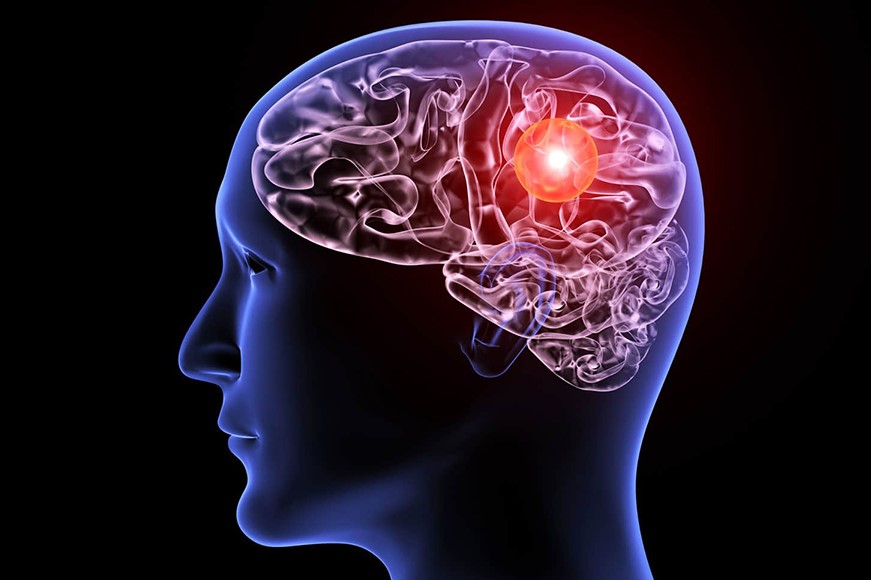
Cerebral Aneurysm: What it is and How to treat it
Cerebral aneurysm: what are the symptoms, causes and consequences of this disease?
Cerebral aneurysm or intracranial aneurysm indicates the dilatation of an arterial vessel in the brain and if ruptured, can lead to rather serious clinical conditions.
We take stock of this complex pathology with our expert, Professor Pietro Mortini, head of the Unit of Neurosurgery and Stereotactic Radiosurgery at IRCCS San Raffaele Hospital in Milan.
What is a celebral aneurysm?
A cerebral aneurysm is a dilation of an artery in the brain.
Due to this dilatation, which is caused by an abnormal loss or absence of the muscular tonaca (one of the 3 layers of the artery), the artery wall is weaker and more fragile and, therefore, there is a risk of rupture of the aneurysm.
It is important to note, however, that not all aneurysms rupture and that smaller ones usually have a lower risk of rupture.
It is also important to remember that a single patient may have more than one aneurysm at the same time.
Types of brain aneurysm
Approximately 90% of brain aneurysms are known as saccular aneurysms, also known as ‘berry’ aneurysms because of their thin stem shape.
The other types are:
- fusiform aneurysm, which protrudes on all sides and is usually associated with atherosclerosis;
- Dissecting aneurysm, which can be the result of damage, often due to trauma, to the tonaca intima (the innermost layer of the artery), with the consequent leakage and collection of blood in the layers of the arterial wall.
Symptoms
90% of cerebral aneurysms present as asymptomatic and are unnoticed until they rupture.
In some cases, however, signs may appear before rupture, including:
- headache
- Ocular pain;
- visual deficits.
- Subarachnoid haemorrhage
- Subarachnoid haemorrhage (ESA) occurs after the rupture, i.e. in the space between the brain and its lining.
Subarachnoid haemorrhage is a condition that affects 10 out of 100,000 people and can manifest itself with various symptoms such as:
- very intense headache
- nausea and vomiting
- neck stiffness;
- pain in the eyes, back or legs;
- mydriasis (pupil size greater than 5 mm in diameter);
- hypertension;
- motor deficits (in particular: loss of balance and coordination);
- sensitivity to light;
- loss of consciousness;
- altered states of consciousness.
Causes of cerebral aneurysm
At present, the causes of cerebral aneurysms are not known.
However, it is now clear that there are risk factors associated with the onset of this disease:
- hereditary;
- acquired
Hereditary risk factors
Hereditary factors include:
- family history of aneurysms
- alpha-glocoidase deficiency, which causes problems in glucose production;
- alpha 1-antitrypsin deficiency, which leads to lung or liver disease;
- arteriovenous malformations (AVM);
- aortic coarctation (narrowing);
- Ehlers-Danlos, Klinefelter and Noonan syndrome;
- fibromuscular dysplasia;
- polycystic kidney
- tuberous sclerosis;
- fibromuscular dysplasia
- hereditary haemorrhagic telangiectasia.
Acquired risk factors
Acquired risk factors, i.e. those non-hereditary factors that develop in the course of life, include:
- age (over 40 years);
- alcohol;
- cigarette smoking;
- drugs;
- atherosclerosis;
- hypertension;
- head trauma.
Diagnosis of cerebral aneurysm
Aneurysm is usually diagnosed by:
- patient’s complete medical history;
- objective examination;
- diagnostic procedures, such as:
- digital subtraction angiography – DSA;
- computed tomography – CT
- magnetic resonance imaging – MRI;
- magnetic resonance angiography.
How to treat a brain aneurysm
For the treatment of a patient with an aneurysm, the primary clinical goal is to reduce the risk of subarachnoid haemorrhage.
The specific treatment for the individual patient is identified by the specialist on the basis of:
- specific characteristics of the patient (age, clinical history, symptoms developed, possible tolerance to specific drug therapies);
- characteristics of the aneurysm (in particular, size and location).
Treatment involves 2 distinct modalities
- craniotomy and surgical clipping, involving the placement of a metal clip at the site of the aneurysm collar;
- using coils, microspirals which, inserted into the aneurysm via a catheter, fill it.
How to prevent a brain aneurysm
To prevent the onset of a brain aneurysm, it is necessary to keep risk factors under control.
In particular, it is recommended
- stop smoking;
- reduce/eliminate alcohol consumption;
- eliminate drug use;
- control blood pressure.
Read Also:
Pre-Hospital Ultrasound Assessment In Emergencies


